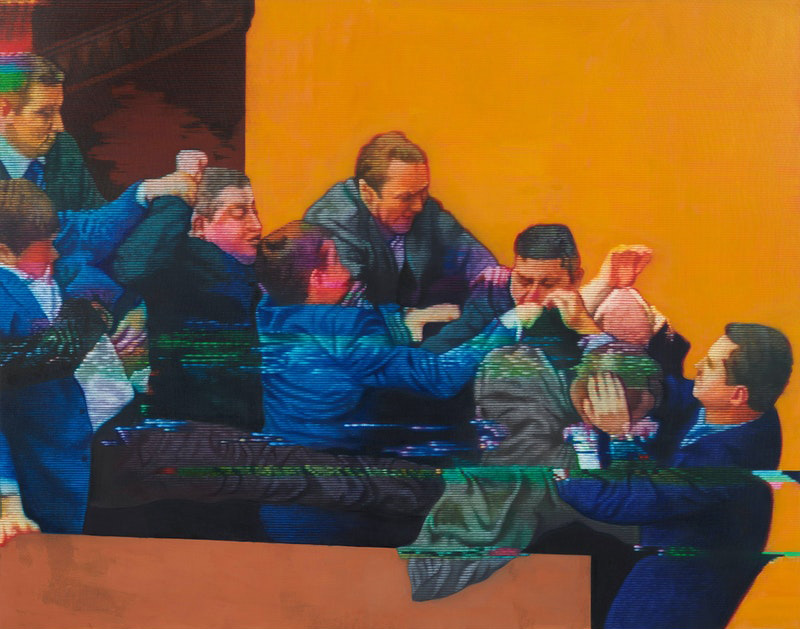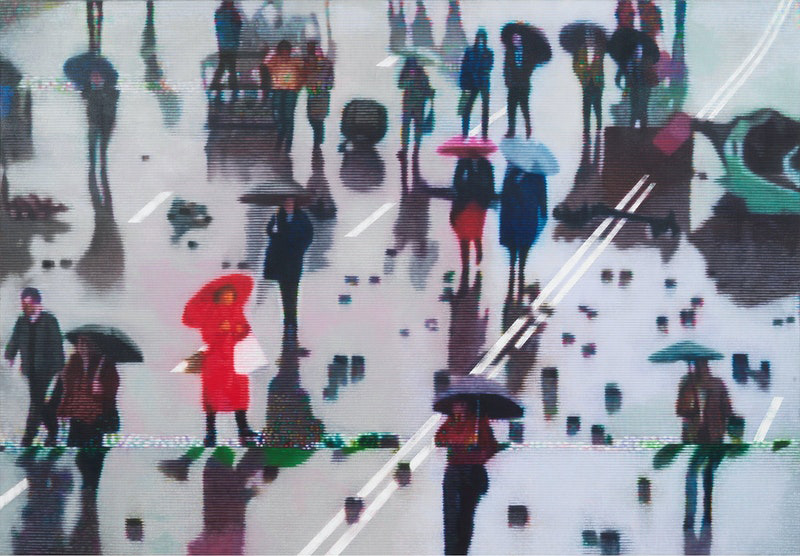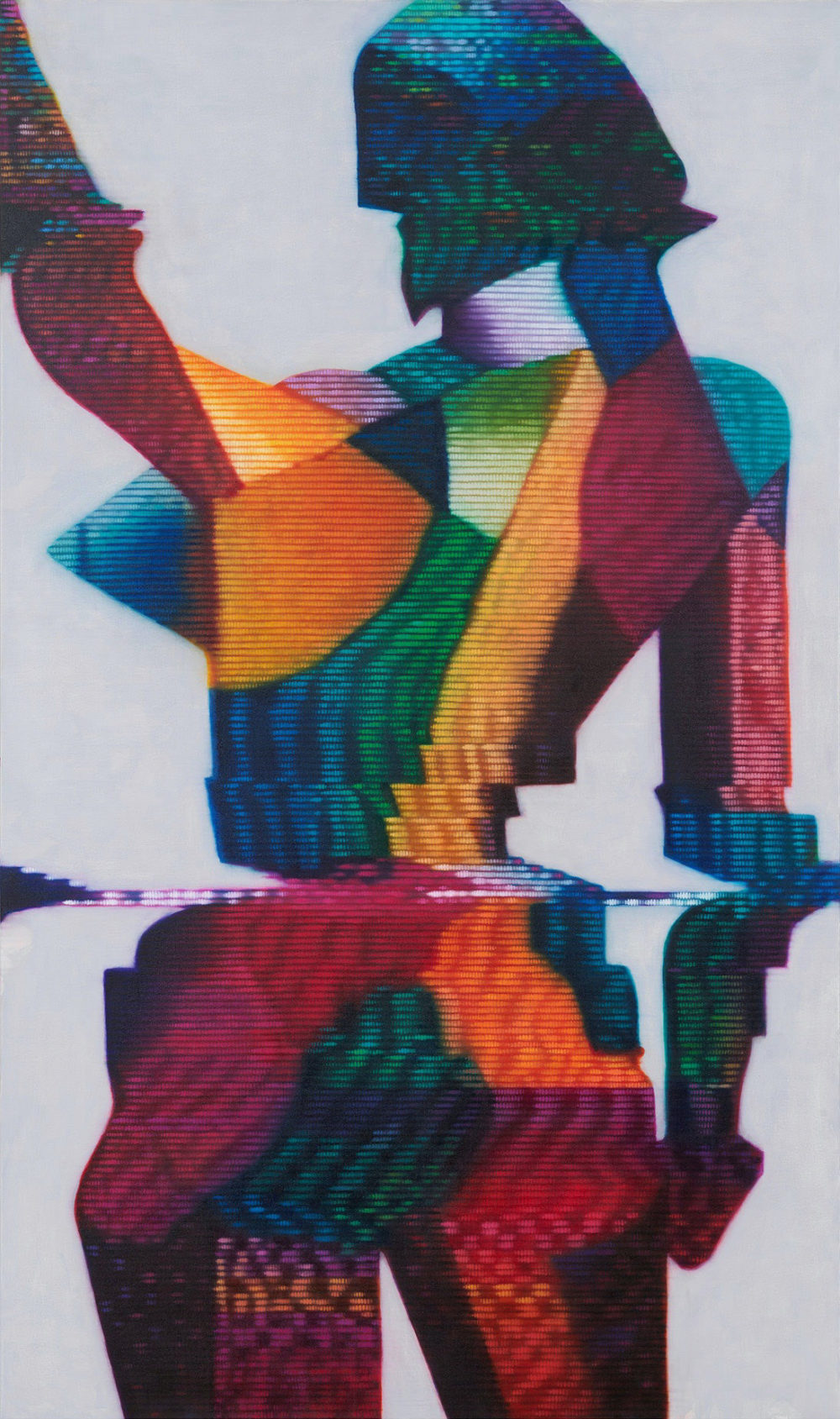
- Source: The Brooklyn Rail
- Author: Nicholas Heskes
- Date: October 21, 2021
- Format: Digital
Kon Trubkovich:
The Antepenultimate End
Fist fights in the Ukrainian parliament are not an uncommon occurrence. In 2015, around the time that the brawls depicted by Kon Trubkovich in the Golden Ratio paintings took place, the conflicts between Ukrainian Nationalists and Russian Separatists in the Verkhovna Rada were continuing to escalate, leading to more legislative violence than usual. In possibly the most infamous incident recorded that year, Oleh Barna of the European Solidarity Party interrupted then Prime Minister Arseniy Yatsenyuk during his annual address by handing him a bouquet of roses, which Yatsenyuk accepted in confusion. Afterward, Barna stepped behind Yatsenyuk and attempted to pull him off the podium by the waist and groin. Yatsenyuk barely resisted, and nearly everyone in the room came to blows. It is difficult not to find the bizarreness of it all amusing. But a certain amount of condescension comes with American news coverage of these fights.

Kon Trubkovich, Golden Ratio (Orange), 2021. Oil on canvas, 79 x 100 inches. Courtesy Gagosian. © Kon Trubkovich. Photo: Rob McKeever.
The specific brawls reproduced by Trubkovich in Golden Ratio (Chartreuse) and Golden Ratio (Orange) (both works 2021) were drawn from a meme series called “Accidental Renaissance” that was popular on Reddit in 2016. It featured photographs and still images from news coverage around the world that captured contemporary events reminiscent of historical European painting. Despite the simplicity of this conceptual move, I was struck by the attention to detail and compositional finesse applied by Trubkovich in rendering these fights. There is a grand quality about them: towering over the viewer, they alarm in a way that recalls those historical battle scenes where twisted bodies fall over one another in the chaos of war, so artificially composed that they seem more than real. Every bit of color imperfection and grain on the CRT display is rendered precisely and on a magnified scale. The effect is a clash of worlds (at least on the formal level) in which archaic electronic media is worked onto elements of the Western European canon. But as I consider this formal relationship more deeply, I am at a loss as to how the different components might be interpreted art historically. It seems to tell a story about the history of painting in which Trubkovich, as with many painters, is the sole and unreliable narrator.

Kon Trubkovich, The Antepenultimate End, 2019. Oil on canvas, 77 x 110 inches. © Kon Trubkovich. Photo: Rob McKeever.
By contrast, Barricade (2021) and The Antepenultimate End (2019) come out of an entirely different body of work from the Golden Ratio series, sharing only a stylistic relationship. They were reproduced from found footage of Moscow following the collapse of the Soviet Union in 1991. These are calm, impersonal, rain-drenched scenes strewn with jarringly painted rubble. People wander around, and it’s not clear where they are going or why they stand watching I’m not sure what, while an anonymous observer records them from above. I am immediately reminded of the dark, faceless crowds in the work of American painter Christopher Brown. From this vantage point, people seem like little toy soldiers, unknowable and infinitely replicable. But the Moscow scenes are also reminiscent of Trubkovich’s own earlier work, in which anonymity, evisceration of the individual, and mediation are consistent themes. Somewhere at the intersection of Female Figure (After Popova) (2021) and the Golden Ratio paintings, Trubkovich took on an art historical bent, hearkening back further in history than much of his previous work did, leading us on a funny sort of journey from Renaissance Italy through Baroque Amsterdam to modernism and television, all the while assuring us that it will all come together in the end.

Kon Trubkovich, Female Figure (After Popova), 2021. Oil on canvas, 81 x 48 inches. © Kon Trubkovich. Photo: Rob McKeever.
The Antepenultimate End draws a path through time from the collapse of the Soviet Union to the present that takes media coverage coming into the US as its point of reference. Over the course of the past 30 years, Eastern Europe has come conceptually ever closer to the US in a way that the US has always insinuated itself physically. Since the Russian Federation’s annexation of Crimea in 2014, Cold War anxieties have now returned to the US in full swing, fueled by conspiracy theories about Russian hackers and communist takeovers. I sense that Trubkovich would like to make a grand statement about this, about memory and communism, about his childhood in Moscow, and about Russia’s relationship to the West in general. History, of course, is still being written (and recorded), and the unwieldy shape of it, as well as the artist’s place within it, is always more difficult to grasp in images than one would like.
On view: Gagosian, September 9 – October 23, 2021, New York

